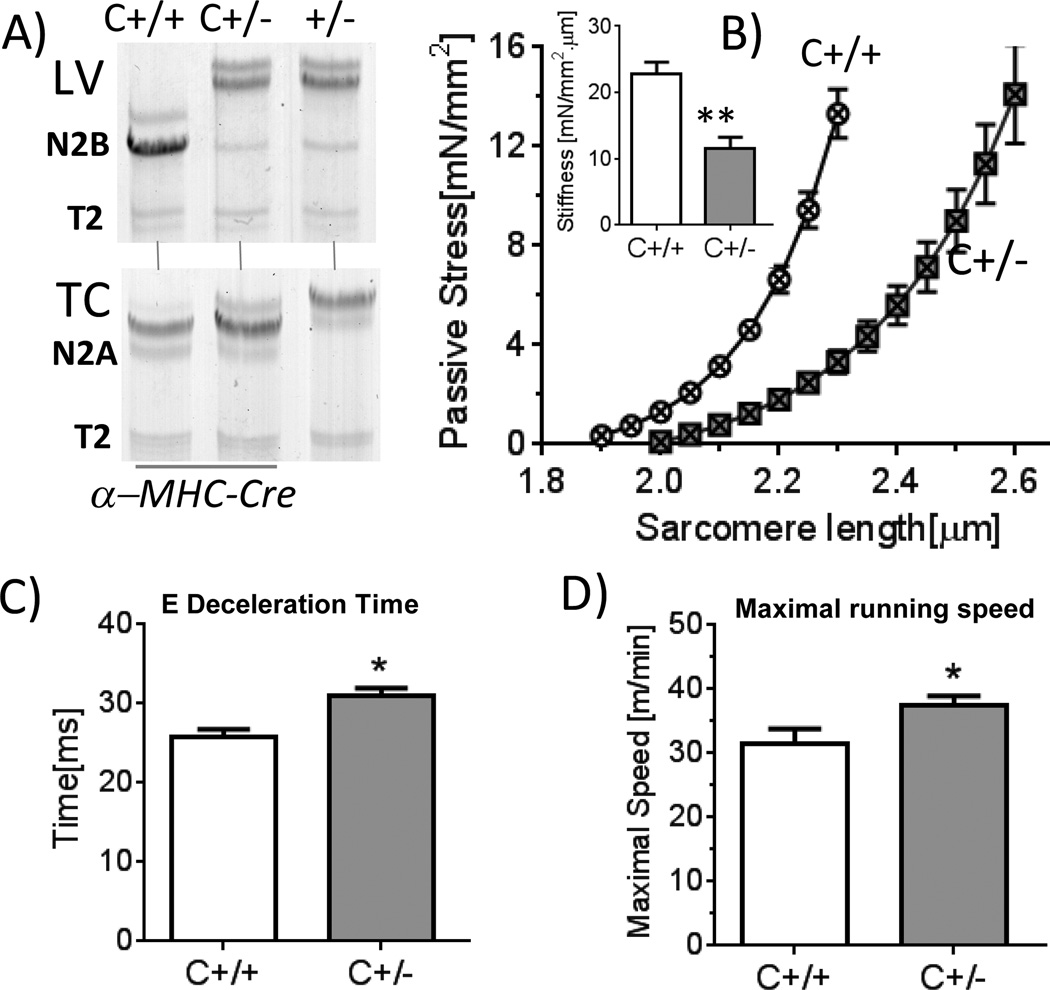Figure 7.
Exercise capacity of cardiac specific α-MHC-Cre; Rbm20ΔRRM flox/+ (C+/−) and α-MHC-Cre; + /+ (C+/+) mice. A) Titin gels of C+/+, C+/− and Rbm20ΔRRM +/− LV (Top) and Tibialis Cranialis (TC) skeletal muscle (bottom). Titin expression in LV of C+/− is as in Rbm20ΔRRM Hets (+/−) but titin expression in TC of C+/− is as in C+/+, mice. Thus the C+/− mouse is cardiac-specific. B) Stress and stiffness of passive skinned LV cardiocytes is reduced in C+/− mice compared to WT (C+/+) mice. C) Pulsed-wave Doppler reveals an increased E-wave deceleration time in C+/− mice. D) Maximal running speed in treadmill exercise test. C+/− mice have a higher maximal running speed. Symbols: *p<0.05, **p<0.01, vs. wild-type (C+/+). B: 5 C +/+ mice and 5 C+/− mice; C: 7 C +/+ mice and 6 C+/− mice; D: 7 C +/+ mice and 6 C+/− mice.

